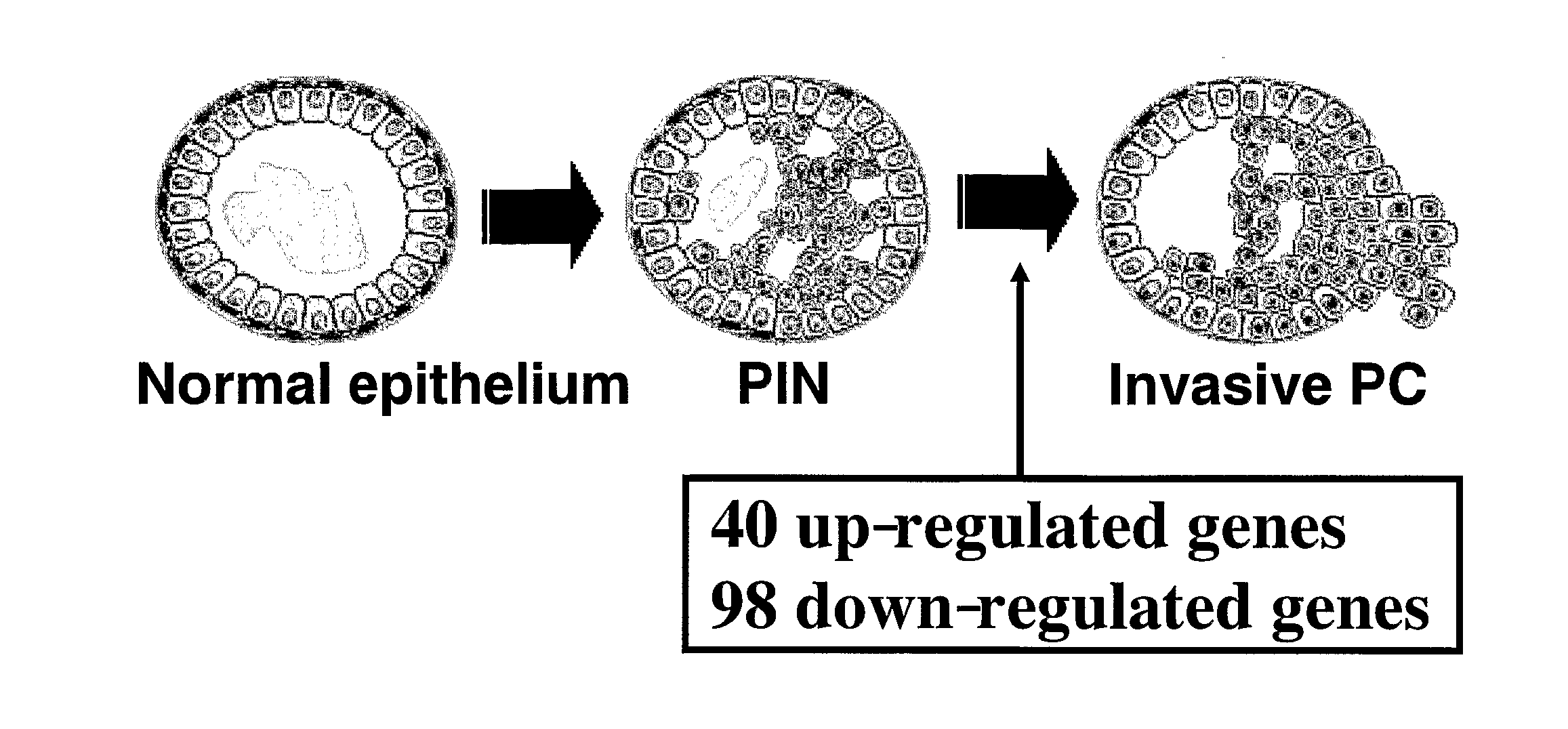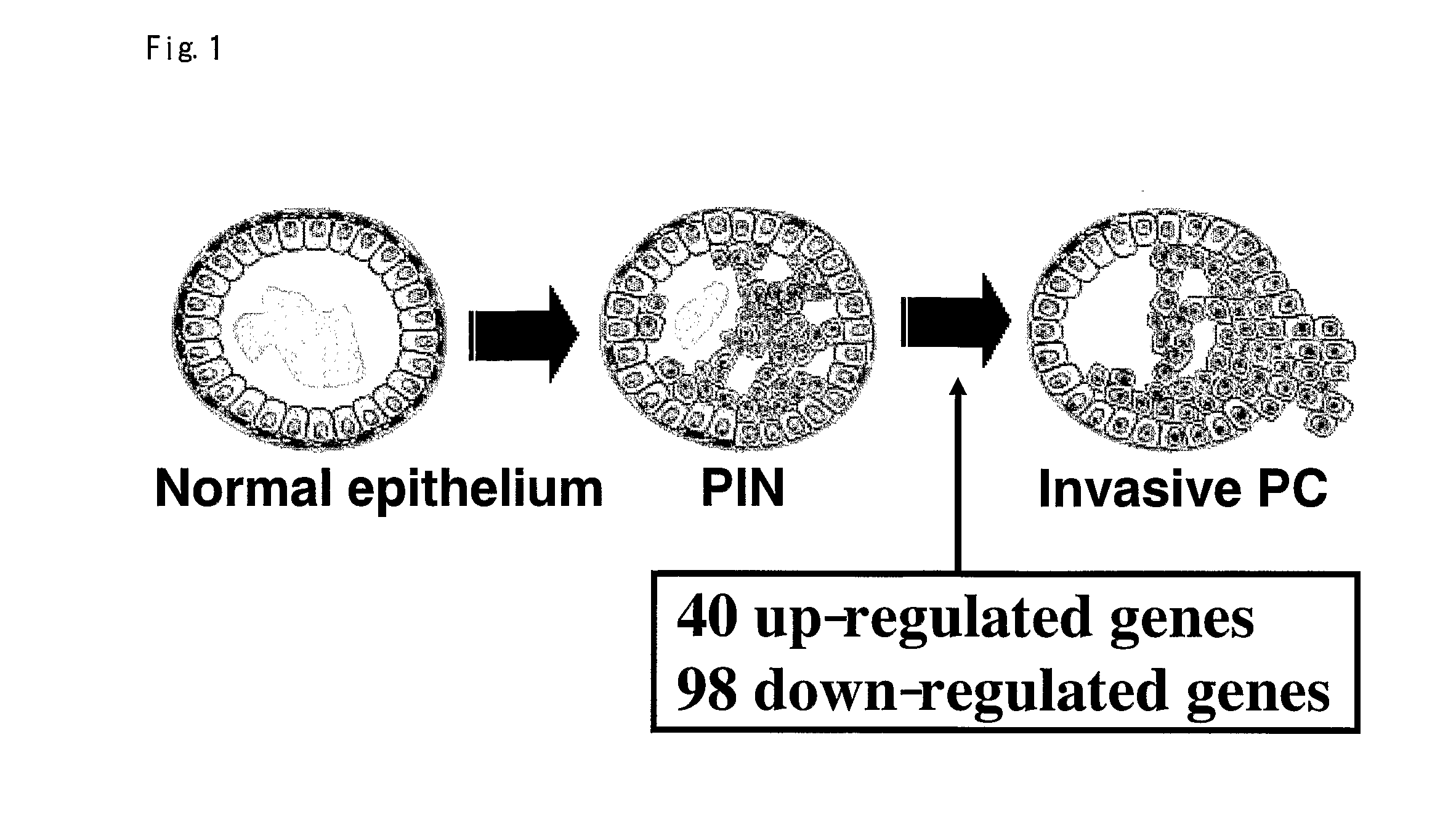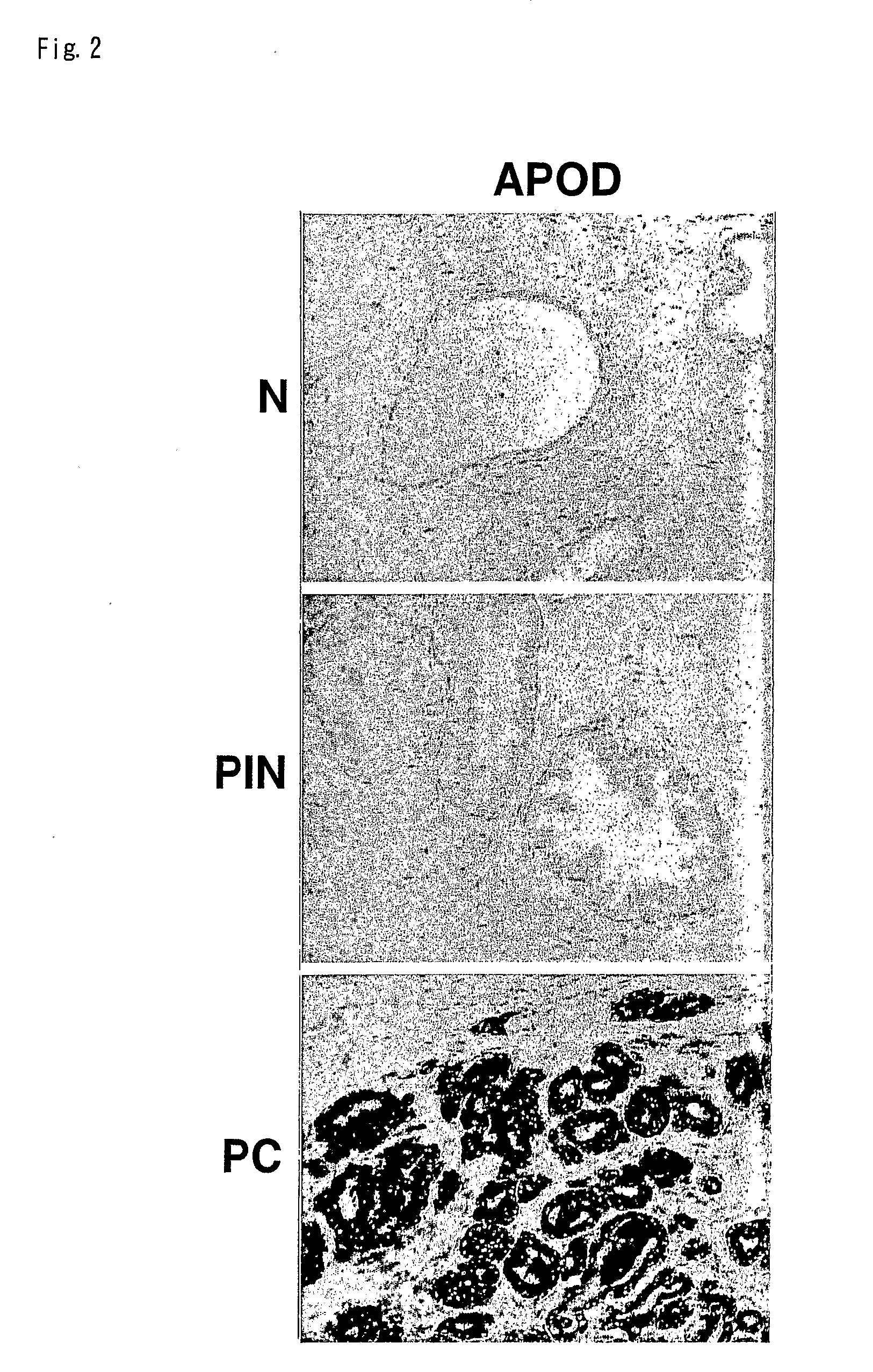Pin-Prc Transition Genes
a transition gene and pin technology, applied in the field of pinprc transition genes, can solve the problems of not being able to detect ultrasound, pin does not significantly elevate the serum psa concentration, and is no longer responsive to androgen ablation therapy
- Summary
- Abstract
- Description
- Claims
- Application Information
AI Technical Summary
Benefits of technology
Problems solved by technology
Method used
Image
Examples
example 1
General Methods
Patients and Tissue Samples
[0178]Tissue samples were obtained with informed consent from 26 cancer patients undergoing radical prostatectomy. All surgical specimens were at clinical stages T2a-T3a with or without N1, and their Gleason scores were 5-9. Histopathological diagnoses were made by a single pathologist before LMM. All samples were embedded in TissueTek OCT medium (Sakura, Tokyo, Japan) immediately after surgical resection and stored at −80° C. until use. From among the 26 resected tissues, 20 cancers and 10 high-grade PINs had sufficient amounts and quality of RNA for microarray analysis.
Laser Microbeam Microdissection and T7-Based RNA Amplification
[0179]LMM and T7based RNA amplification were performed as described previously. Prostate tumor cells, prostatic intraepithelial neoplasia cells and normal prostatic ductal epithelial cells were isolated selectively using the EZ cut system with a pulsed ultraviolet narrow beam-focus laser (SL Microtest GmbH, Germa...
example 2
Identification of Genes Up- or Down-Regulated During Malignant Transformation from PINs to Prostate Cancers
[0183]We focused on differential expression patterns between PINs and PRC to search for genes likely to be involved in the transition from non-invasive precursor PINs to malignant cancers (FIG. 1). Comparing the expression profiles of 20 PRC with those of 10 PINs, we identified 40 up-regulated genes (Table 1) and 98 down-regulated genes (Table 2). The list included POV1, CDKN2C, APOD, FASN, and VWF as up-regulated, and ITGB2, LAMB2, PLAU and TIMP1 as down-regulated; the altered genes might be involved with cell adhesion or motility in invasive PRC cells. Some of the later are associated with cell adhesion and proteinase activity, suggesting that their expression changes may contribute to the invasive phenotype by abolishing ductal structures during the transition from PIN to PRC.
TABLE 1Up-regulated genes in the transition from PIN to PRCAccession No.Hs.SymbolTitlefunction known...
example 3
[0184]To validate the gene expression pattern in the transition from PIN to PRC, we performed immunohistochemical analysis of the genes differentially expressed in the transition from PIN to PRC in our data. In general, prostate cancer tissues includes PRC cells, PIN cells and normal prostatic epithelium heterogenously, and we compared the staining pattern of each kinds of cells associated with prostatic carcinogenesis on the same tissues from the same patient. As shown in FIG. 2, apolipoprotein D (APOD) was abundantly expressed in PRC cells while PINs and normal prostatic epithelium from the same patient had no or very weak expression of APOD protein. The results implicate this expression profile analysis is highly reliable.
PUM
| Property | Measurement | Unit |
|---|---|---|
| Fraction | aaaaa | aaaaa |
| Digital information | aaaaa | aaaaa |
| Electrical conductance | aaaaa | aaaaa |
Abstract
Description
Claims
Application Information
 Login to View More
Login to View More - R&D
- Intellectual Property
- Life Sciences
- Materials
- Tech Scout
- Unparalleled Data Quality
- Higher Quality Content
- 60% Fewer Hallucinations
Browse by: Latest US Patents, China's latest patents, Technical Efficacy Thesaurus, Application Domain, Technology Topic, Popular Technical Reports.
© 2025 PatSnap. All rights reserved.Legal|Privacy policy|Modern Slavery Act Transparency Statement|Sitemap|About US| Contact US: help@patsnap.com



